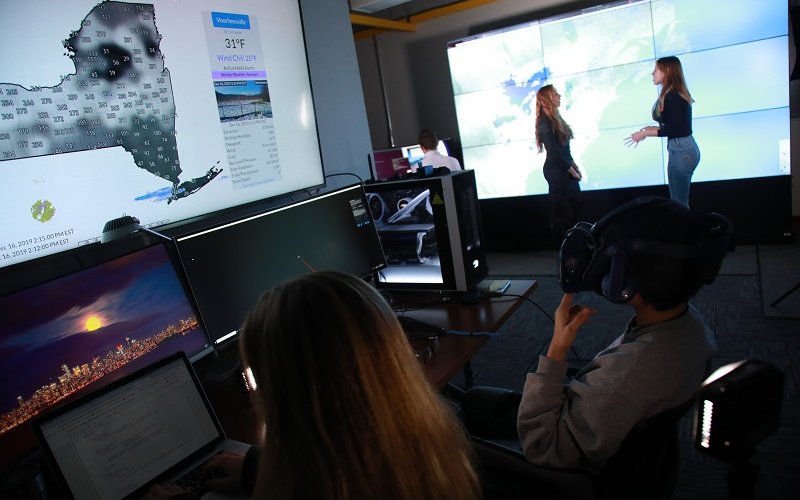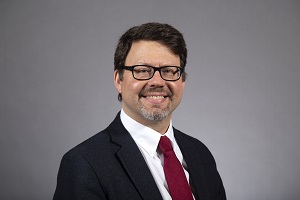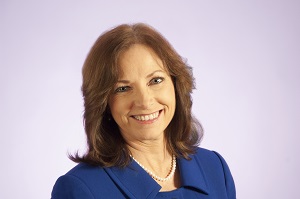UAlbany researchers survey AI landscape for Bezos Earth Fund

ALBANY, N.Y. (July 30, 2024) — The Bezos Earth Fund (BEF) recently launched a landmark $100 million AI for Climate and Nature Grand Challenge to fund efforts to leverage artificial intelligence to counter the damage humans are causing to Earth’s climate.
To help set the stage, a University at Albany team joined colleagues at Columbia University and GIS firm Esri to conduct a wide-ranging assessment of the uses and future challenges and opportunities of employing AI to address the harm being done to Earth’s natural systems.
AI holds enormous potential to help humans better understand and solve the problems we face — for example, by employing remote sensing and acoustic data analysis to more fully account for biodiversity loss, or using AI to optimize steel and cement production to reduce energy consumption and waste, according to the the resulting report.
The assessment cautions, however, that technology alone cannot solve these problems, ultimately concluding that “large-scale innovation and policy overhauls aimed at changing the underlying socio-economic and political systems” fueling climate change are also urgently needed.
The members of the UAlbany team included Thenkurussi (Kesh) Kesavadas, Theresa Pardo, Jeanette Altarriba, Xin Li, George Berg, Zheng Wu, Tianning Huang, MBA student Aidai Kokonova and Rockefeller College PhD student Battulga Buyannemekh.
We caught up with Eric Stern, interim director of UAlbany’s AI Plus Institute, which mobilized the UAlbany AI community to provide insights for the report, to discuss what was learned and where the work goes next.
Why was it important for UAlbany to participate in this project?
Partnering around this important effort was a matter of stars aligning. While the Bezos Earth Fund team was developing a vision for their Grand Challenges Program and centering AI as a key accelerant in achieving that vision, UAlbany was developing its AI Plus Initiative, recruiting a cadre of AI experts, and building out its nationally competitive AI supercomputing infrastructure. As conversations between the two organizations developed, it became clear that UAlbany, working with the BEF and the other partners, could make an important contribution to the Grand Challenges Program.
UAlbany provided crucial content on current and anticipated advances in artificial intelligence research and development. Our experts conducted a comprehensive review of cutting-edge AI research and practices across many disciplines and enriched that overview by interviewing visionary thought leaders in this space.
AI is an umbrella term for many different technologies with many different applications. Which climate-based applications for AI do you find most promising?
The report highlights several intriguing climate-based applications for AI. Among these, using AI to process and analyze vast quantities and varieties of data from diverse sources (e.g., remote sensing satellites, drones, sensors) — what’s known as multimodal AI — is crucial for monitoring environmental changes, optimizing solutions and accelerating discoveries in climate science.
Another compelling application is digital twins, which are sophisticated, very high-fidelity computer simulations of real-world systems. AI can enhance these simulations by providing computation power and leveraging various data streams for greater accuracy and realism. These simulations allow us to experiment and explore the impacts of various actions on specific environments without risking harm, significantly enhancing decision-making for climate mitigation and adaptation strategies.
Additionally, the report underscores the potential of AI in predictive modeling and forecasting, which can be used to assess and optimize crop yields, energy demand and weather projections, leading to cost savings and reductions in greenhouse gas emissions. The integration of edge computing and multimodal AI further enhances real-time monitoring and analysis.
Sustainability is a daunting challenge associated with artificial intelligence because an enormous amount of energy is required to build and train the models that power AI. How do we overcome that?
One approach is investing in specialized hardware and software designed specifically for AI, which can speed up the training and operation of large-scale models and thereby reduce their carbon footprint. UAlbany’s collaboration with IBM to host one of the company’s prototype Artificial Intelligence Unit systems is an example of this. IBM is a leader in developing so-called high accuracy, low precision computing for enhanced energy efficiency. Furthermore, adopting low-cost, lower-complexity models for smaller AI tasks can reduce energy use without giving up effectiveness. Edge AI and TinyML — short for tiny machine learning —are promising solutions that use inexpensive, power-efficient hardware to perform local data processing, which minimizes the need for extensive data transmission and vast central computing power.
Ongoing advances in quantum computing also can improve energy efficiency, although practical applications are still under development. In addition, policy changes like the proposed Artificial Intelligence Environmental Impacts Act of 2024 aim to comprehensively study AI’s environmental impacts and develop standards for measuring and reporting these effects. These combined efforts emphasize the importance of balancing AI’s capabilities with sustainable practices to mitigate its environmental footprint.
Have you become more or less optimistic about AI’s ability to help stop and reverse the damage humans have done to the natural world?
After helping facilitate the conversations that contributed to this report, I have become more optimistic about AI’s potential to help address the climate and nature challenges we all face. AI’s capabilities in, for example, multimodal data, digital twins, and edge computing demonstrate its potential to provide precise, efficient, and scalable solutions for monitoring and managing environmental impacts. However, this optimism is qualified by concerns about ethical considerations, governance, and sustainability in AI development —with an emphasis on ensuring that these technologies are deployed responsibly and equitably. Collaborative efforts among academia, industry, government, and civil society further reinforce the idea that AI can be a powerful tool in driving systemic change. While challenges such as extravagant energy consumption remain, with careful and informed implementation AI holds great promise for fostering a more sustainable and resilient future for us.
Looking at UAlbany’s research portfolio, where are our faculty poised to make the greatest contributions?
Researchers at UAlbany are poised to make significant contributions in any number of areas including fundamental research in foundation models, machine learning, knowledge-graphing, quantum computing and edge computing. They also are doing essential work on the ethical use and enhanced trustworthiness of AI, and in a wide range of areas including decarbonization, mitigating the impacts of extreme weather and climate science.
With the University’s new on-campus supercomputing clusters expected to come online next month, UAlbany faculty will have extraordinary new tools at their disposal to deepen our understanding of our world and help solve vital problems for the greater good of the people of New York and around the globe.






